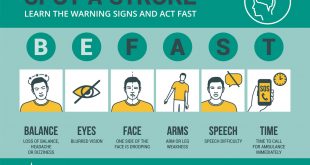By Premier Foot & Ankle Specialists
Peripheral arterial disease, commonly referred to as “PAD,” is a vascular condition caused by a buildup of plaque in the arteries (blood vessels that carry oxygen-rich blood from the heart to tissues and organs in the body) that leads to narrowing or blockages of the arteries, which results in restricted blood flow to the legs and feet. The plaque that builds up in the arteries is an accumulation of fats, cholesterol, and other fibrous substances in the body. This restriction of flow prevents oxygen-rich blood from reaching the feet and legs, thus impairing circulation to the lower extremity.
Peripheral arterial disease occurs most commonly in arteries of the legs and feet, but it may be an indication of more widespread arterial disease in the body, which affects other arteries that carry blood to the heart, aorta, kidneys, brain and the arms. This widespread arterial disease can lead to coronary artery disease and cause hearts attacks or strokes.
Peripheral arterial disease affects 8 to 12 million Americans, which amounts to one in every five people over the age of 70 having the disease. It is estimated that individuals with peripheral arterial disease have a two-to-six times greater chance of dying from a heart attack or stroke. PAD and diabetes are also the leading cause of foot and leg amputations in the United States.
There are multiple risk factors for peripheral arterial disease, which include:
1. Smoking
2. High blood pressure
3. High cholesterol
4. Diabetes
5. Physical inactivity with sedentary lifestyle
6. Obesity
7. Personal or family history of PAD, heart
disease, heart attack, or stroke
Peripheral arterial disease can manifest with multiple symptoms, some of which include:
1. Pain or cramping in the legs with walking, climbing stairs, or physical exertion, which is known as “intermittent claudication”
2. Fatigue, heaviness, aching or numbness in
3. Pain in the feet and legs at night that can disturb your sleep, which is known as “rest pain”
4. Weak or absent pulses in the feet
5. Wounds on the legs, feet, or ankles that are slow to heal (or do not heal within 2 to 3 months)
6. Cold, pale, thinned or blue skin on the legs and feet
7. A decreased skin temperature compared to the opposite leg
8. Reduced or absent hair growth on the legs and feet
9. Decreased growth of toenails
Peripheral arterial disease can be diagnosed by your podiatrist through obtaining a comprehensive medical history of the patient. A thorough physical examination can also be performed to evaluate pulses, condition of skin, presence of wounds or other foot deformities to determine risks of PAD. Other non-invasive vascular tests, such as an ankle-brachial index (ABI) may be performed to further assess the degree of arterial disease a patient has. An ABI measures the difference in blood pressure between the arm and ankle, and can be a reliable indicator of peripheral arterial disease. Depending upon the degree of arterial disease, a podiatrist may refer a patient to a vascular specialist for additional testing and treatment if indicated.
Peripheral arterial disease is treated through lifeless changes, medications, and sometimes surgery. Treatment options for PAD may include the following:
1. Increasing physical activity with exercise programs
2. Smoking cessation
3. Reducing blood pressure
4. Lowering cholesterol
5. Strict control of blood sugar with diabetes
6. Healthy diet
7. Medications for improving blood flow, preventing blood clots, controlling blood pressure, cholesterol and blood glucose levels
8. In some cases, vascular procedures can be performed to improve blood flow to the legs and feet the legs or feet
For patients with peripheral arterial disease, having foot deformities such as bunions, hammertoes, bony prominences, or other dermatological conditions such as thickened fungal nails, ingrowing nails or calluses can place patients at greater risk of developing wounds and infections. What may seem like a minor problem such as a cut, scrape, ingrown nail or small abrasion can result in a more serious complication if one’s blood flow is too impaired for normal healing. To avoid such complications with peripheral arterial disease, it is important to take precautionary measures such as checking feet daily for any sores, cuts, bruises, rashes, calluses, skin and nail infections or pain. Maintaining well-hydrated skin by applying a thin film of lotion to the top and bottom of both feet daily, but avoiding in between the toes. Getting properly measured and fitted while buying new shoes to avoid any pressure sores or blister formations, checking one’s feet a few hours after wearing a new pair of shoes for any areas or irritation. Avoidance of walking barefoot to avoid pressure wounds and injuries is also essential, even while walking indoors. Regular foot exams by your podiatrist, which may include at-risk foot care and debridement of thickened toenails and calluses is also crucial in maintaining overall foot health. If you or a loved one are experiencing symptoms that are similar to those above, contact your local podiatrist for evaluation. Dr. Roggow and Dr. Bonjorno are happily taking new patients and look forward to meeting you!
Premier Foot and Ankle
(941) 488-0222
premierfootandanklefl.com
4120 Woodmere Park Blvd, Suite 5,
Venice, FL 34293
 Southwest Florida's Health and Wellness Magazine Health and Wellness Articles
Southwest Florida's Health and Wellness Magazine Health and Wellness Articles

